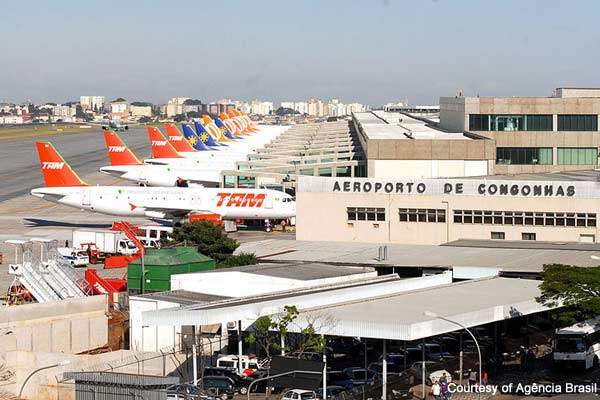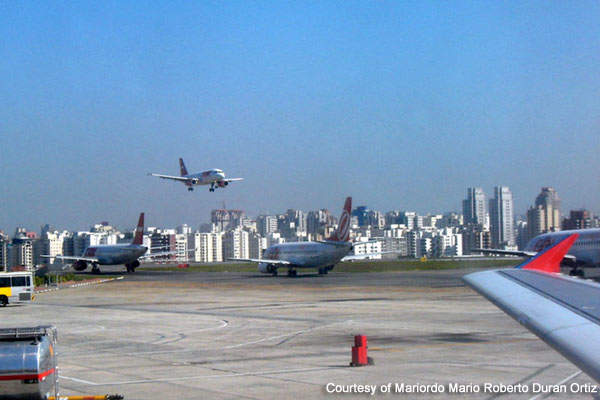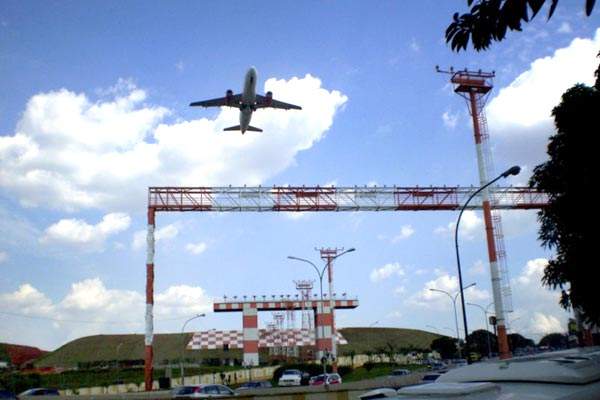Congonhas International Airport (IATA code CGH) is located in Sao Paulo, Brazil. It is also known as Sao Paulo International Airport. It was the second-busiest commercial airport in Brazil when it opened in September 1936. The airport is currently the third-busiest airport in the world in terms of cargo and freight.
The airport is owned and operated by Infraero, a company owned by the Brazilian Government. The airport originally had an annual passenger handling capacity of six million, which was expanded to its current capacity of 17.5 million.
The airport, which has a single terminal, managed international flight operations to Argentina, Uruguay, Paraguay and Bolivia and flights to Rio de Janeiro-Galeao International Airport until 1980.
Better weather conditions in Sao Paulo and the longer runways at Sao Paulo-Guarulhos International Airport (GRU), which was inaugurated in 1985, led to the restriction of Congonhas International’s domestic flight operations. Congonhas is connected to Sao Paulo-Guarulhos International by shuttle bus.
Expansion
Overhauling and enlargement work at Congonhas International’s terminal began in August 2003 to accommodate increasing passenger traffic. The modernisation project was completed in three phases.
The first phase included the construction of new boarding lounges, four departure gates, 12 boarding bridges, a new arrivals area with five baggage carousels and a parking lot for 3,400 cars. The first phase was completed in 2004.
The second phase included the installation of elevators, a baggage handling system, escalators, an underground passageway and overpasses for taxis and buses. It was completed in 2006.
The third phase, which included the construction of a tunnel connecting the airport to Avenida Washington Luiz, was completed in 2007. The tunnel construction reduced pedestrian traffic in front of the airport. The work also included the construction of a light rail vehicle line integrated with the Sao Paulo Metro system.
The entire overhaul project cost about $33m and was completed in 2007.
The airport’s terminal area was expanded from 37,300m² to more than 51,000m² in 2006. In January 2006 the project received about R$1.1bn ($630.5m) from the Board of National Bank of Economic and Social Development (BNDES) for modernising the passenger terminal.
A new 9km railway line, which will extend between the airport terminal and Barra Funda station and include five stations, is being built. Baggage carousels, booking facilities for flights and check-in counters are available at Barra Funda.
Financing
In December 2007 a R$18.6m ($10.76m) loan was approved by BNDES for construction of the underground passageway below Avenida Washington Luiz. The passageway provides direct access to Congonhas International’s roadway system.
Construction of the passageway cost about R$23.3m ($13.48m). BNDES financed 80% and the remaining 20% was managed by Congonhas International. The Inter-American Development Bank and the World Bank will also provide financing for the rail infrastructure project.
Contractors
A consortium of Camargo Correa, OAS and Galvao Engenharia won the tender for the three-phase modernisation contract in January 2006.
In March 2002 Congonhas International awarded a $465m design, build, operate and transfer (DBOT) contract to CPTM to build the new railway line connecting the airport’s southern area to the city centre.
Terminal features
Congonhas International has a single passenger terminal. The terminal has a central hall that features stylish architecture.
The terminal is built on a 51,535m² site. Amenities include duty-free shops, retail out-lets, business and conference facilities, facilities for the disabled, a currency exchange and communication facilities.
The terminal has about 49 service and product stores including three bookshops, a perfume store, a gift and tobacco store and a photo shop. It also has bars, cafes and restaurants and banks and ATMs. Congonhas International is Wi-Fi enabled.
Runways
The airport has two runways: 17R/35L and 17L/35R. The length of runway 17R/35L is 1,940m and the length of runway 17L/35R is 1,435m. The runways are located at an elevation of 2,631ft.
Transportation
Congonhas International provides shuttles and taxis and limousines. A bus service connects the airport with Sao Paulo-Guarulhos International. Public transport buses are also available.
Prepaid taxi counters can be found near the arrivals area. Although limousine companies are not represented at the airport, the service can be booked online.
Car parking
Congonhas International features a single car-parking facility near Avenida Washington Luiz. Short- and long-term parking is available. Public transport links the car park with the terminal.
A new 61,000m² parking garage was built in January 2006. The airport also offers reserved parking spaces. Construction of the new garage provided 200 jobs. The garage has five floors.





